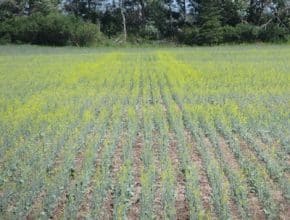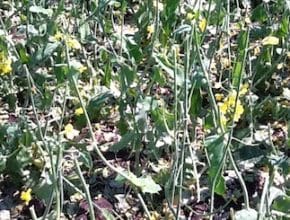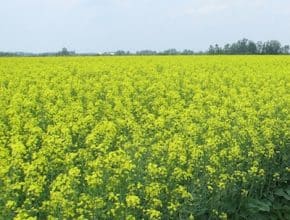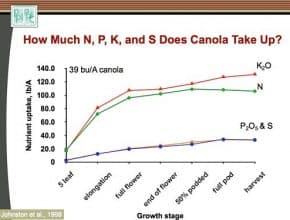Distinguished pests. CCC agronomists launch a new video (embedded above) this week with tips and helpful images for your pre-harvest disease scouting routine. Who ya gonna call? More tank mixes and more time stress create all sorts of scenarios for crop-damaging mistakes. Hopefully the two parties can figure out the problem and resolve this situation amicably. If not, a consulting…
July 23, 2014 - Issue 16
-
-
The areas in orange and red have had the most days with maximum temperatures of 28°C or above in July. These hot days can cause higher levels of flower abortion, especially if they come in combination with warm nights. Areas in light green have had 2 to 4 days with maximum temperatures of 28°C or more, and dark green areas…
-
We have three questions on insects plus a mystery question (shown in the photo above). We don't know what this is, and we're hoping you might…
-
Yield-robbing levels of disease will be easy to spot in canola fields now and through to harvest. This is a great time to start your pre-harvest disease scouting. The CCC has released a new pre-swath disease scouting video available on www.canolacouncil.org on proper identification including tips and close up views of typical damage from the major diseases…
-
When strange patterns of damage in canola fields line up perfectly with the sprayer boom width or follow typical drift patterns, phone calls and finger pointing begin. Explanations can be simple: The wrong product was added to the tank, or the right product was applied but on the wrong field. But situations are often much more complicated — and made…
-
Heat at flowering and hail at late flowering and podding can be highly damaging to yield. Lost pods are yield that cannot be recovered, and hail that knocks back a crop at this stage often doesn’t give the crop enough time to compensate and produce a good crop before fall frost. Growers often look for rescue treatments to revive the…
-
The risk of sclerotinia stem rot infection is still present on later crops that have not reached full flower, especially given the rain and high humidity in some regions this week. Highly variable crops may also be at “full flower” or their “most yellow” — other terms for 50% flower — for longer than typically expected, which also extends the…
-
Sulphur and nitrogen deficiencies are showing up in some canola crops. The crop may not have received enough fertilizer to begin with, especially if this year’s rates did not compensate for high yields and high removal last year. Excess moisture may have added to nutrient losses. Flowering is not an ideal time to top dress, and applications any time after…






